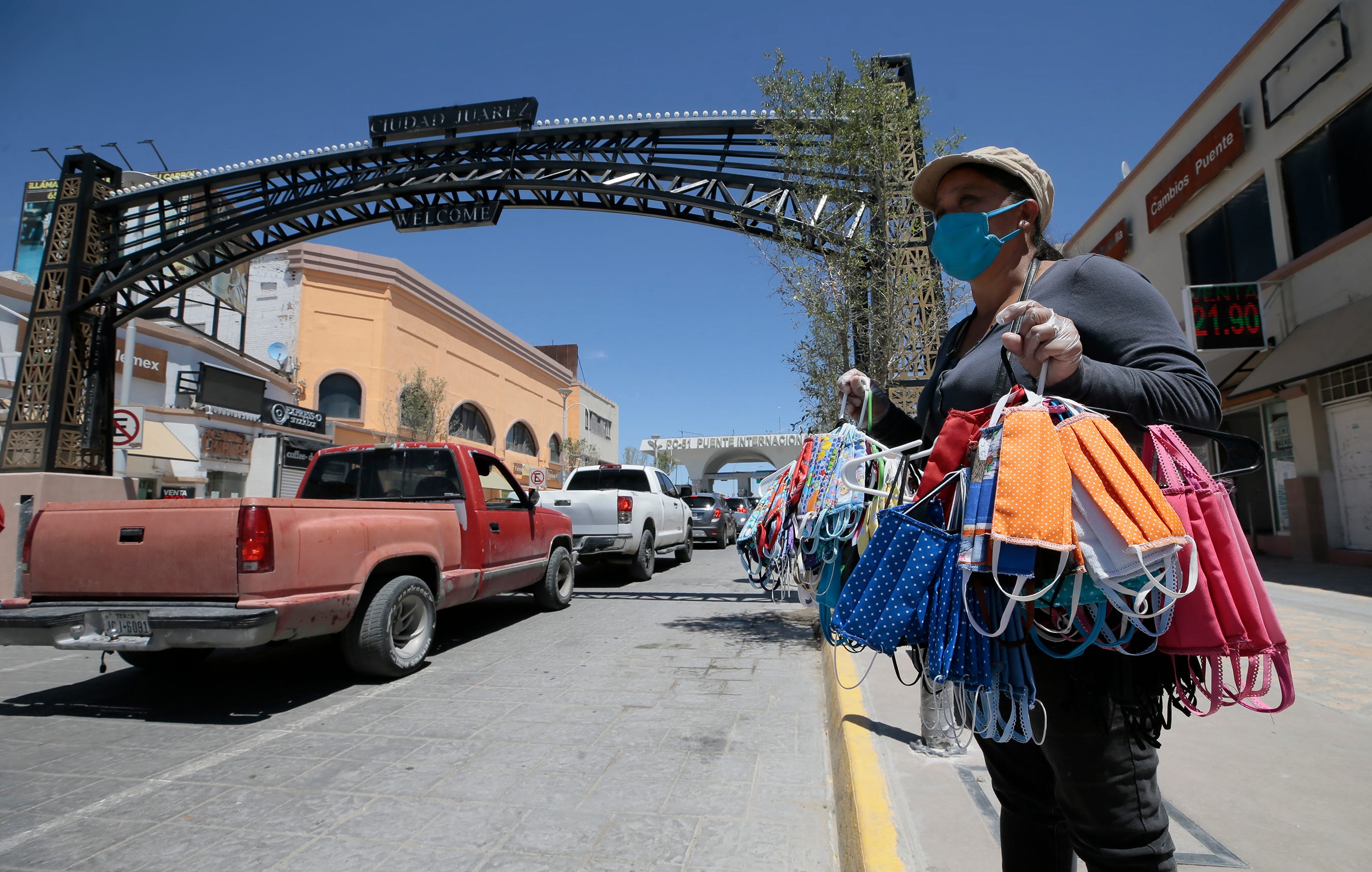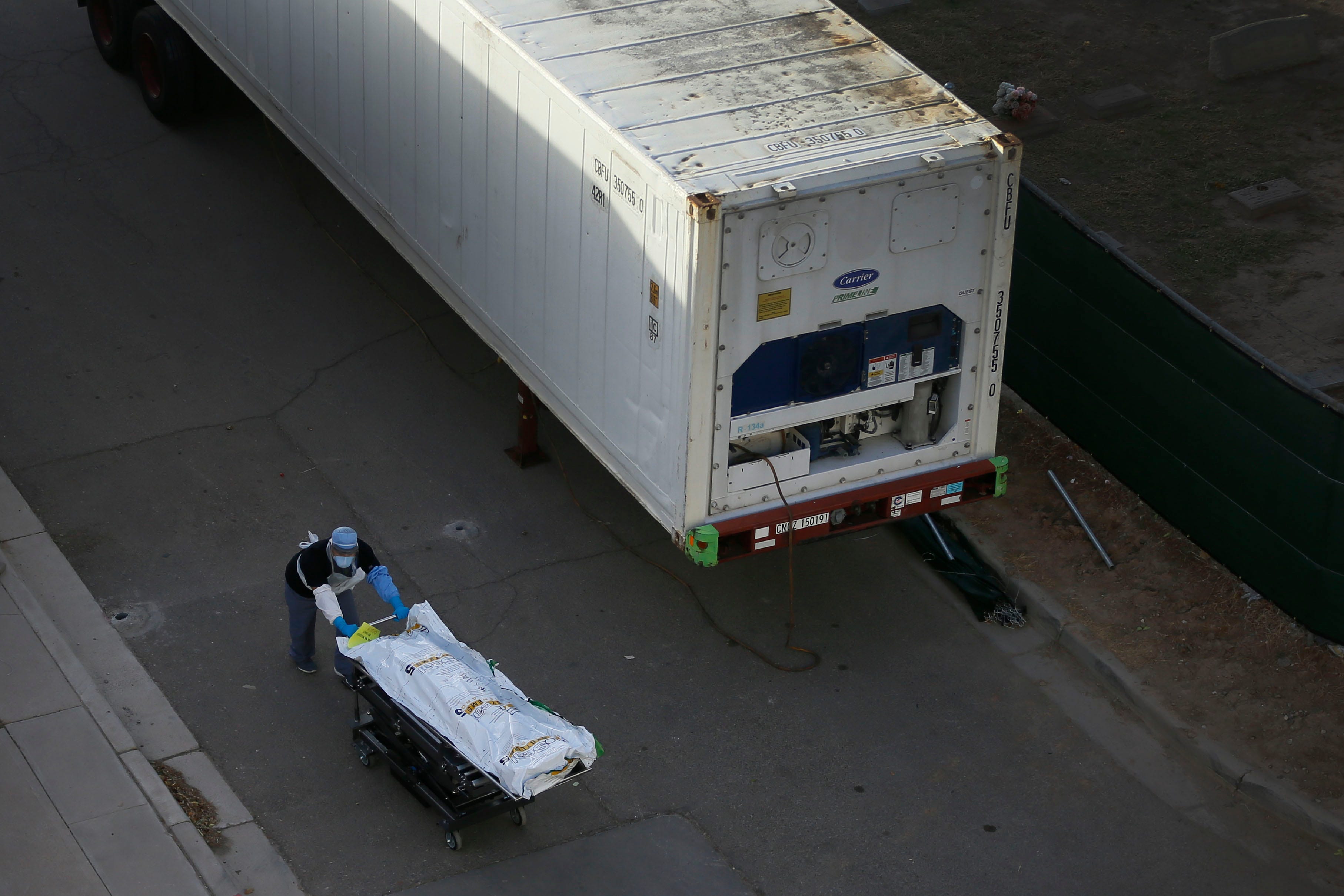By Martha Pskowski and Lauren Villagran/El Paso Times
Health experts like to warn that “disease knows no borders.”

It was true for El Paso and Juárez at the U.S.-Mexico border, two cities a river’s width apart, as COVID-19 ripped through families on both sides as if the border didn’t exist, changing and ending lives regardless of nationality.
The two cities confronted waves of COVID-19 that hit within days or weeks of each other. The virus took a terrible toll on the lives of Borderland residents, overwhelming hospitals, shuttering businesses and isolating previously intertwined communities.
More than 3,300 people have died in El Paso; more than 4,500 have perished in Juárez.
Texas border counties like El Paso and Hidalgo, with strong ties between McAllen and Reynosa, were some of the hardest-hit in the state. U.S. border crossings were closed to most Mexican nationals for nearly two years, isolating binational families and communities. Both cities suffered parallel economic losses.
Among the top lessons learned from the past two years is that the U.S. and Mexico, El Paso and Juárez, need to work more closely together on pandemic crisis management, according to research and interviews with more two dozen experts in border health. The El Paso Times and Puente Collaborative is examining what worked in the global fight to contain the pandemic and future strategies to cope with disease threats at the border.
El Paso and Juárez officials opened lines of communication and tried to find ways to share resources, like vaccines. But divisive politics and a lack of federal support, from either Washington D.C. or Mexico City, hindered deeper collaboration that could have saved lives.
“At a time when we were very polarized about borders in particular, this disease comes along that forces both the northern border of Mexico and the southern border of the United States to be isolated, politically and geographically,” said Dr. Manuel de la Rosa, vice president for community engagement at Texas Tech University Health Sciences Center and a member of the U.S.-Mexico Border Health Commission.
Binational plans laid by the U.S. and Mexico in the wake of past, less lethal pandemics were largely ignored while the vehicles for addressing Borderland health had been largely dismantled.
The North American Plan for Animal and Pandemic Influenza — a guide to cooperatively addressing disease threats for the U.S., Mexico and Canada — wasn’t broadly put into action, analysts say. The North American Leaders Summit, where issues of cross-border health were once discussed, hadn’t been held since 2016. The U.S.-Mexico Border Health Commission, tasked with improving well-being in the Borderland, had seen its funding decline and activities curbed.

“Border cooperation is difficult,” said Julie Collins-Dogrul, associate professor of sociology at Whittier College who studies border health. “That means we need everything we can do at multiple levels to help facilitate that communication, to legitimize it and to say it’s important.”
Health authorities say after two years of experimentation in pandemic crisis management, border communities have a lot to learn from one other. At great odds, sister cities from Texas to California found creative ways to share resources and coordinate responses.
San Diego vaccinated Tijuana maquila workers, and El Paso did the same for factory workers in Juárez. New Mexico’s health department shared contact-tracing information with counterparts in Chihuahua state. A Douglas, Ariz., health clinic closely coordinated disease surveillance with nearby hospitals in Agua Prieta, Sonora.
El Paso County Judge Ricardo Samaniego said binational communities need to come together to learn from one another — however painful reliving any part of the past two years may be.
“It was too expensive and too many people died for us to walk away from it,” Samaniego said.
COVID-19 hits the Borderland
There were many unknowns at the beginning of the pandemic: doubts about how the novel coronavirus spread, what policies would be most effective at curbing transmission, who was at greatest peril.
“Our first case was detected that night on March 13,” said Dee Margo, who was the El Paso mayor in 2020. “We started gearing up to deal with an unknown, and we didn’t know the severity.”
The United States had inordinately more resources to fight the pandemic than Mexico. Government spending on health care in Mexico was a mere $608 per capita in 2020, according to the Organization for Economic Cooperation and Development. The United States spent $9,054 per capita in 2019, according to the most recent data available.
In the Borderland, officials in two countries, with vastly different resources and health systems, faced the same threat.

People living near the U.S.-Mexico border faced enormous risks. El Paso and Juárez share high rates of diabetes, obesity and hypertension — conditions that made COVID-19 more lethal. Multi-generational households, a norm in the Borderland, meant vulnerable seniors could be more exposed to the virus.
In the U.S., federal spending cuts had hobbled border health offices charged with coordinating with Mexico on health issues.
“Instead of having one resource to ride into that effort, we basically had to say, New Mexico what can you do? El Paso what can you do?” Travis Leyva of the New Mexico Office of Border Health in Las Cruces said. “We were limited.”
The Centers for Disease Control and Prevention declined an interview request for this series.
Pandemic becomes political
As local leaders scrambled, the U.S. and Mexican governments turned inward. The U.S. prohibited non-essential travel at land border crossings beginning on March 21, 2020, and although the effort was billed as a “joint” decision with Mexico, the Mexican government never restricted southbound travel.
Border restrictions were one of many political responses to the pandemic lacking a clear public health rationale — although hundreds of countries opted for border closures in response to COVID-19. A recent study of border restrictions worldwide found no correlation between the bans and a reduced spread of COVID-19. The World Health Organization discouraged against border closures as a method of pandemic control.
The U.S. Department of Homeland Security extended the “temporary” restrictions on non-essential travel month after month, for nearly two years. Still, because U.S. citizens and legal permanent residents were exempted, El Paso and Juárez saw an average of half a million or more crossings of personal vehicles at area international bridges in 2020; the number neared 800,000 before the restrictions were lifted in November 2021.
The politicization of the crisis made it harder for health leaders to do their job effectively — especially where two countries, three states and two cities govern a population of 2.5 million people.
“You would think public health would not be embroiled in politics,” said Alicia Thompson, health director for Cochise County, Arizona, on the border with Sonora, Mexico. “But the way that public health is structured in the United States, there has always been a political component to the work that we do.”
Playing telephone across the border
The Mexican Consulate in El Paso held a meeting in the early days of the pandemic to bring together leaders from Juárez and El Paso, Chihuahua and Texas. The consuls general in both cities; Margo and then-Juárez Mayor Armando Cabada; El Paso County Judge Ricardo Samaniego and the cities’ respective health authorities, gathered around a table, with the chairs set at some distance.
Information was shared. Pledges were made to collaborate.
“We made a show of caring about each other,” said Juan Acereto, a former Mexican consul who serves as liaison to the U.S. for the Juárez municipal government. “But in the end, we each retreated to our respective homes. We became selfish.”
Health authorities in El Paso and Juárez did stay in frequent contact, according to El Paso health and emergency management authorities. But much of the communication was informal, people calling each other up to share information and plans. “You had this tremendous disconnect between our recommendations and advice and what we’re doing versus what they’re doing,” Margo said.
El Paso’s epidemiologist held daily calls with the epidemiologist responsible for Juárez, said El Paso Fire Chief Mario D’Agostino.
“I had a personal communication with the Juárez health authority,” said Dr. Hector Ocaranza, El Paso County’s health authority. “That was done via phone, as well. Having that informal communication, we shared plans, we shared also other new medical information, how we’re going to be responding to a particular situation that might be arising. That’s what we would do.”
Leyva in Las Cruces said in the early months his office would notify Chihuahua of binational cases — residents with ties to Chihuahua who tested positive in New Mexico — so they could contact-trace south of the border. But eventually the volume was too great.
“Once the cases were in the hundreds daily, it was very difficult to do that,” Leyva said. “Then we switched over from case investigation into community awareness.”
Case numbers and hospitalizations spiked in the Borderland region in October 2021.
COVID-19 waves tended to coincide in neighboring Las Cruces and El Paso. But according to an El Paso Matters/Kaiser Health News analysis, New Mexico border counties fared better than Texas border counties.
The analysis also found from March 2020 to January 2021, people died of COVID-19 at significantly higher rates in Texas border communities than statewide. The COVID-19 death rate for residents under 65 in Texas border counties was especially high.
The Texas Department of State Health Services, which runs the Office of Border Health, declined an interview request for this article.
Overcoming vaccine inequity
When the fall 2020 spike passed, and vaccines began to arrive in U.S. border counties, binational communities began to work together in new ways.
Five University Medical Center nurses were the first El Pasoans to be vaccinated on Dec. 15, 2020. A vaccination campaign in Juárez began four months later on April 12, 2021 — but vaccines trickled into northern Mexico slowly, with months-long gaps between available shots.
Mexicans waited, some supplies of vaccines in the U.S. neared their expiration date. The border remained closed to non-essential travel and only President Joe Biden could authorize the donation of vaccines to Mexico.
The U.S. made its first donation of 1.7 million shots to Mexico in June 2021, but U.S. border communities were clamoring for opportunities to share vaccines more quickly with sister cities. Ultimately, the U.S. would donate more than 14.1 million vaccines to Mexico.

Dr. Cecilia Rosales, chair of the Division of Public Health Practice & Translational Research at the University of Arizona in Phoenix, led an effort to establish vaccine clinics inside ports of entry for Mexican nationals — something El Paso leaders achieved for thousands of maquila and farm workers but couldn’t provide for other Juárez residents.
Arizona clinics vaccinated more than 33,000 Mexican nationals at ports of entry during the border restrictions.
Looking forward
Health leaders across the border region in the U.S. and Mexico say they did the best they could with the information available at the time. But looking forward, many said they hoped to formalize cross-border networks built over the past two years and standardize collaborative practices.
“I think what we’ve learned from this pandemic is the need for us to really standardize, especially these projects that we have with Mexico,” Rosales said.
“Viruses don’t respect borders, which is why you have to have North American solutions,” Rudman said. “You can’t assume you can go it alone.”
Cover photo: Gravediggers at Panteon Sueños Eternos move a casket from a funeral home van for burial of a person who died of COVID-19 Wednesday, Nov. 11, 2020 in Ciudad Juárez, Mexico. (Briana Sanchez/El Paso Times)


